Native American Artist and Activist Confronts History in Fort Worth Museum Moment — Inside Jaune Quick-to-See Smith’s Powerful Statement
Memory Map Takes a More Accurate Look at the Story and People of America
BY Courtney Dabney // 10.16.23The playful Coyote has been around since creation for the Salish peoples. Sculpture by Jaune Quick-to-See Smith. (Photo by Courtney Dabney)
Memory Map, which opened over the weekend at The Modern Art Museum of Fort Worth, is the largest and most comprehensive showcase of Native American artist Jaune Quick-to-See Smith’s career. It features about 130 objects spanning the 83-year-old artist’s past 50 years, beginning in the mid-1970s.
Organized by the Whitney Museum of American Art, (which just wrapped up a showing of the exhibition in New York City) this massive, new exhibition will be on view through January 21 in Fort Worth. It joins Jammie Holmes: Make the Revolution Irresistible which is still on view there through November.
The new exhibit is not laid out chronologically, but rather thematically. It begins where Jaune Quick-to-See Smith’s artwork began ― with ecological themes and landscapes. But over time, Smith felt her work wasn’t political enough.
Soon issues of the land and of her people’s history got confronted head on, taking American colonialism and consumerism to task.
Her explorations include collages, drawings, prints, paintings and sculpture, all “flipping the mainstream historical narratives and illuminating absurdities in the dominant culture,” The Modern notes.
Jaune Quick-to-See Smith is a citizen of the Confederated Salish and Kootenai Nation who once migrated to and from California and Canada following massive herds of bison. Before being confined to an unknown piece of land allotted for them in Montana in the mid-1800s.
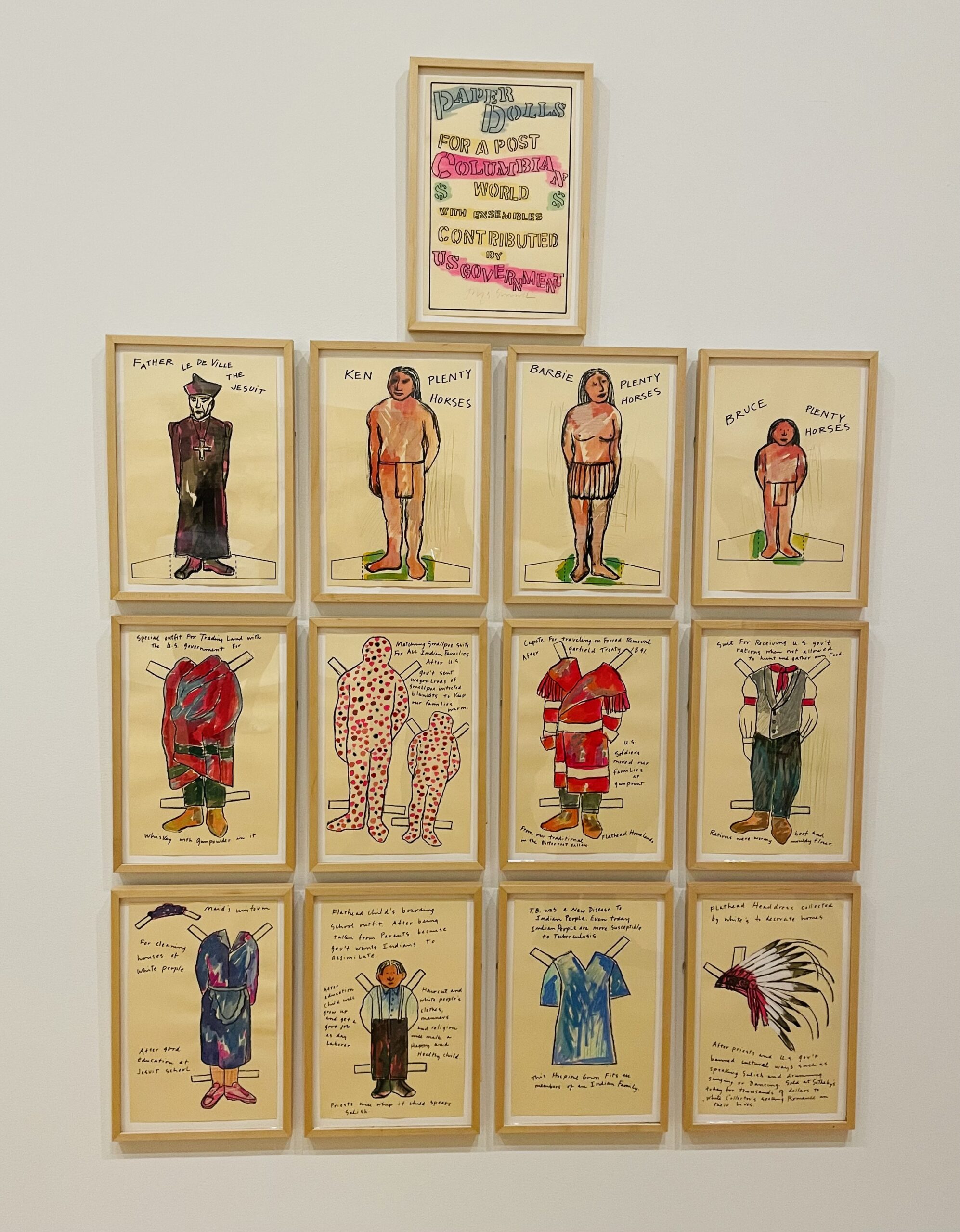
“I was born in 1940 at a Jesuit mission on the Flatland Reservation in Montana,” Smith says. “In the ’40s health care wasn’t good there, and only one in 10 native American babies survived. I was that one in 10.”
She tells PaperCity Fort Worth that Quick-to-See was a family name which was first bestowed on her grandmother.
“It means insight, not eyesight,” Smith explains. “These names are usually given to children while they are still young. Sometimes these descriptive names are even changed if they do not fit the child later in life.”
Even after my largely cursory exposure to her artworks ― filled with her decades of research and insight ― it’s clear that her name is most fitting.
Quick-to-See Smith’s works blow up the myth of the empty wild West, awaiting mostly European born immigrants to fill it. People, plants and animals have been there for millennia, she points out. Every piece points back to the first Americans and their legacy, which has been so thoroughly white washed and often intentionally destroyed.
Smith’s own activism has championed cultural preservation efforts. She became active in land and historic preservation while living in New Mexico (where she still resides). She supported campaigns to save ancient petroglyphs that were at risk of being destroyed due to residential development efforts. They were permanently preserved.
These earliest artworks in America were in the process of being literally chiseled out of the rocks one by one and sold as tourist souvenirs. Petroglyph National Monument was the result of the efforts of many, including Smith, to preserve more 24,000 ancient petroglyphs near Albuquerque, New Mexico. It was designated in 1990.
Ecology, Conquest and Animism
Petroglyphs, which are often seen as crude or rudimentary, are really the underpainting for all of the art forms that followed. They were mankind’s earliest attempts to communicate through form and media. Along with the ever-present petroglyphic imagery of canoes, bison, horses and hand prints are the themes of both environmental issues and political retelling which are repeated throughout this artist’s multi-media works.
Smith says that her art gradually became more political, when she first chose to add written words, including the powerful speeches of native chiefs from the late 1800s.
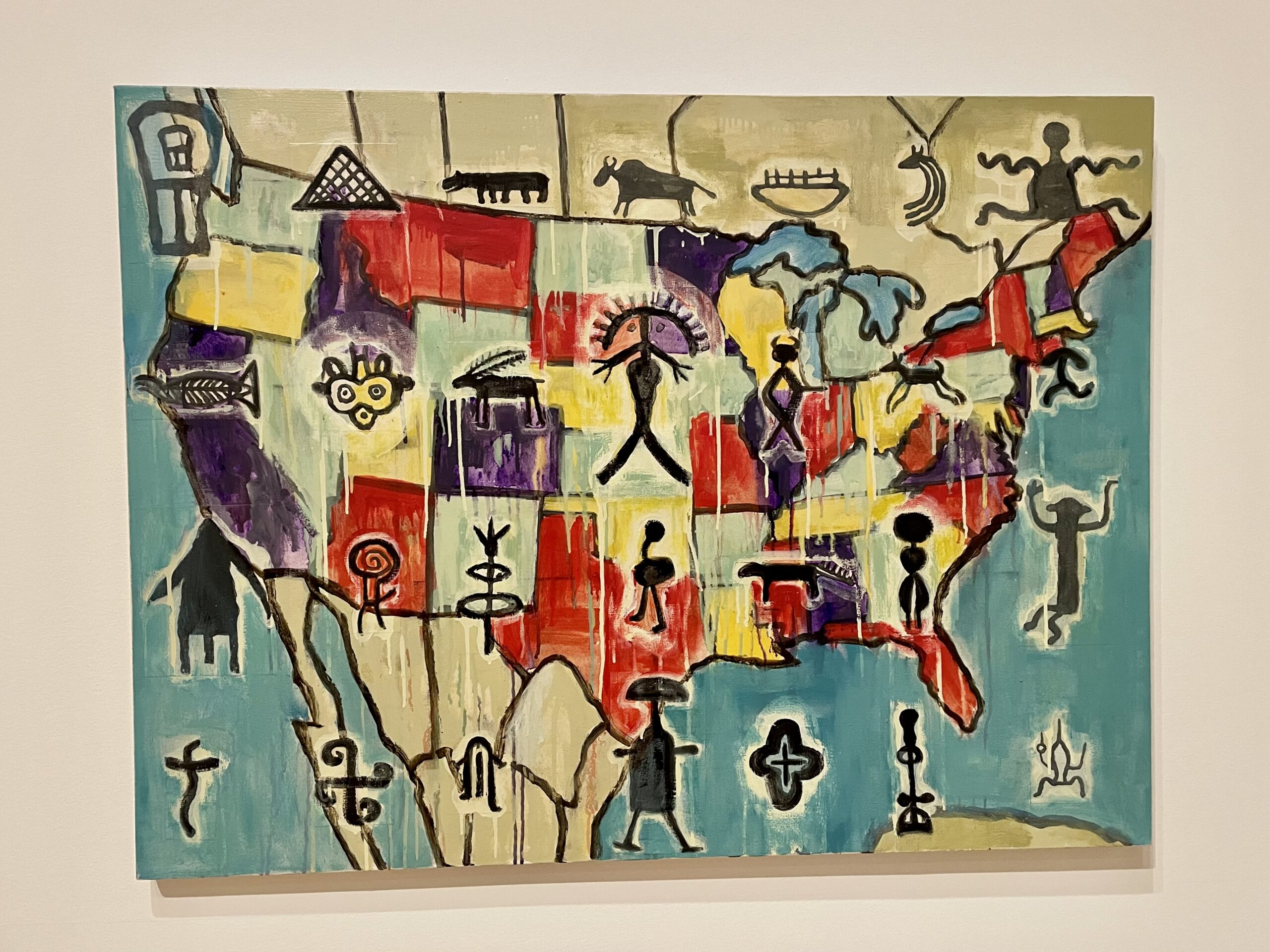
Her remapping series explores the American map through a different lens. Often turning it on its side to further disorient and retell the story from a new vantage point.
“A native person would have a very different view of the map,” Smith tells PaperCity. “It’s a memory map with petroglyphs to remind people who were the first peoples here. Who were the first Americans. We are not just assigned to a reservation. We are active in every single state.”
She notes that there are hundreds of Native people groups still waiting to be formally recognized by the United States government. It is also probably not surprising to learn that Jaune Quick-to-See Smith experienced overt racism as a child.
“There were signs reading: ‘We don’t serve Indians here.’ So we didn’t wear anything that could identify us,” the artist recalls. “We had to be ashamed.”
Today, Smith says they wear their colors. Often in the form of tribal ribbons around the hem of their clothing, as well as the flat-brimmed trading hats with their colorful hat bands. It’s a point of pride. A way to show the world they are a Native American.
But oppression, exploitation and invasion are never far from Smith’s artistic lens.
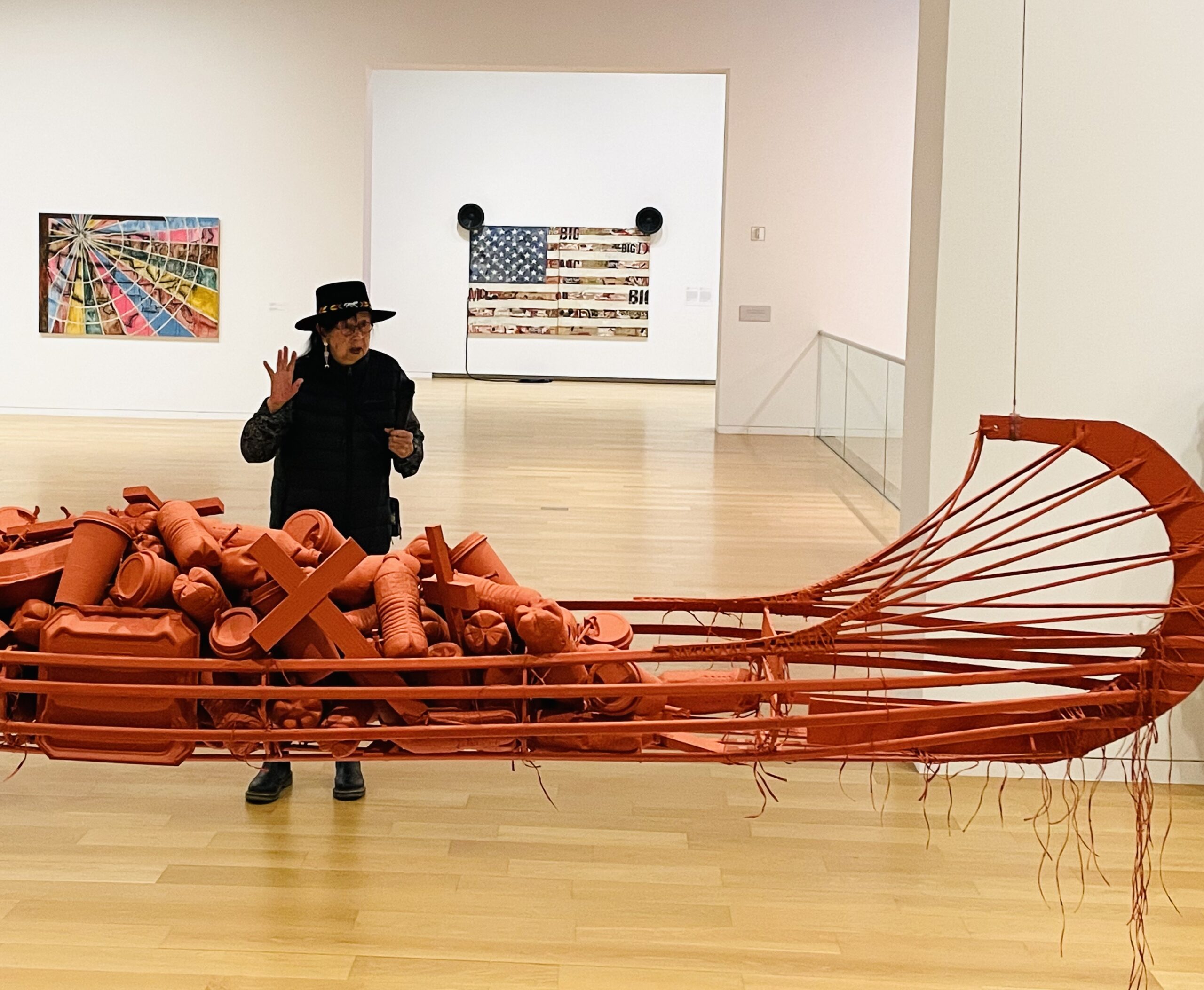
Red ochre represents cleansing and renewal in many Native American cultures. So one dramatic sculpture of the canoe is filled with missionary crosses along with trash items like plastic water bottles and disposable coffee cups filling it. The dangling sculpture is awash in red ochre. As both a condemnation and a prayer for cleansing.
“War can be carried out for both greed and religion. We can argue and war over anything,” Smith says. “In the end, we’re all in here together.”
There is also a collage of nine prints all featuring General George Armstrong Custer in Memory Map. It’s a reference to Colonial conquest and ultimately to its genocide. Westward expansion and the doctrine of manifest destiny called for not only the relocation of Indigenous peoples but for their extermination. And Custer with his trademark mustache embodied the violence of that movement more than almost anyone.
“I’m always riffing on art history,” Smith notes, as each separate artwork portraying Custer is done in the style of another well-known artist from Jasper Johns to Rauschenberg.

While the exhibition is an overload of imagery and each artwork could be explored at length, given the time, one trickster leaves his indelible paw print throughout.
The playful Coyote plays an important role in the creation stories of the Salish people. He taught the Salish about spirituality and the animistic relationship between people, the land and all living creatures. But Coyote is also a trickster whose lessons reveal the chaos of human lives and the hubris in their actions ― including politicians and priests.
At the age of 83, Jaune Quick-to-See Smith is not slowing down. She’s not finished educating either. Her 50 year retrospective exhibition on view at The Modern Art Museum certainly leaves quite an impression. This is powerful art that makes you think.












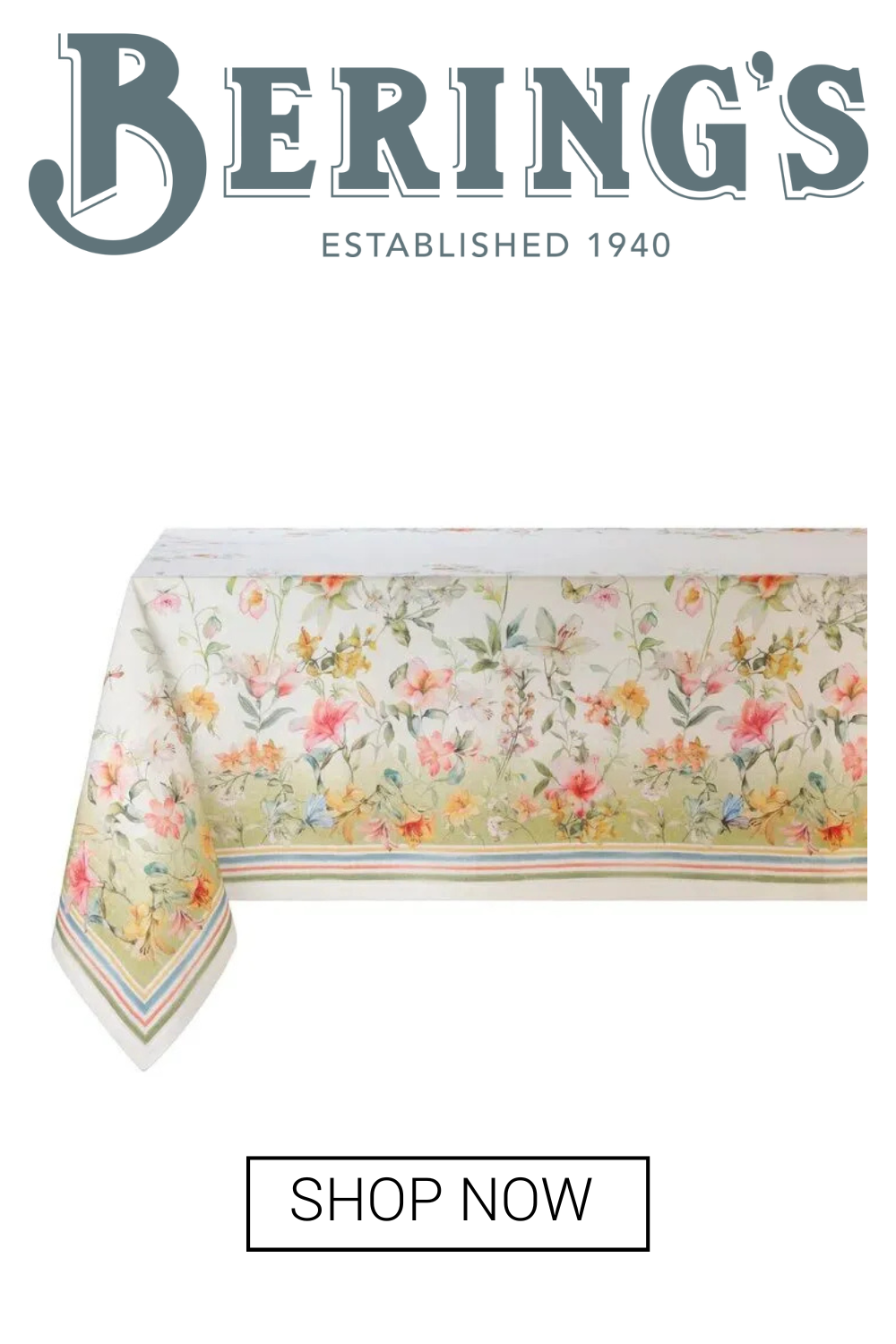









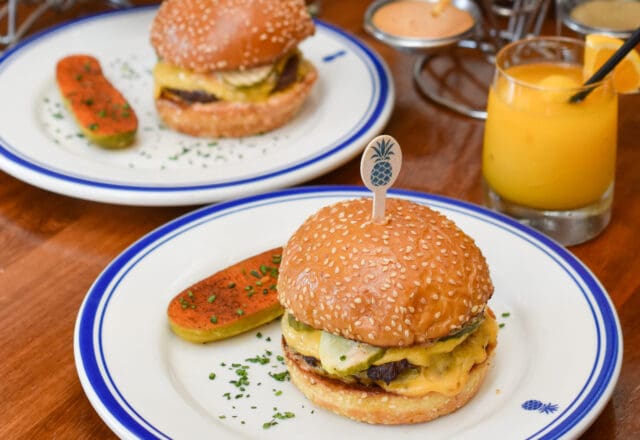

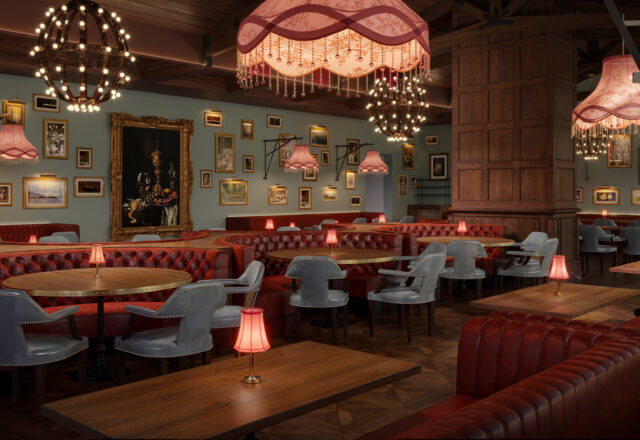











_md.jpg)





_md.jpg)




_md.jpg)




_md.jpg)






_md.jpg)
_md.jpg)














_md.jpg)
